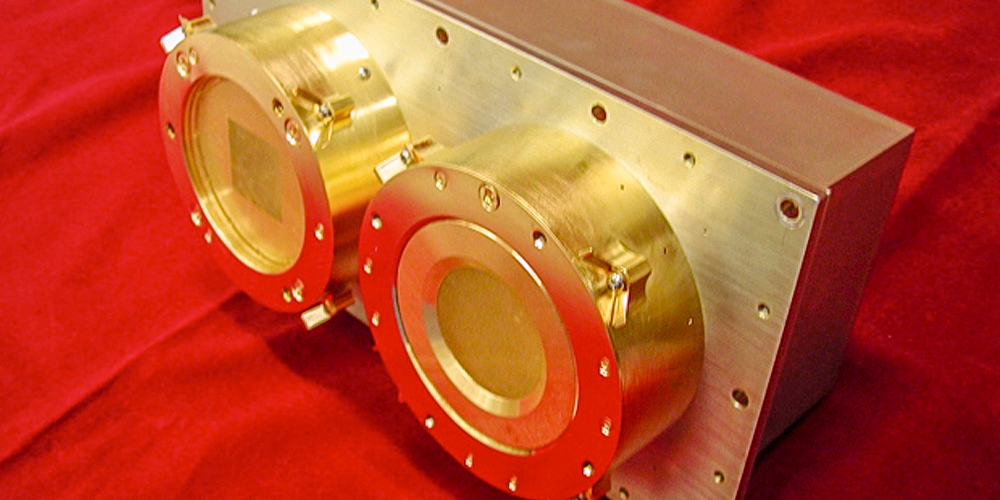UTD Instrument Shipped to Space
The device will gather data on the ionosphere.
10.11.2019
![]() The UTD Ionospheric Connection Explorer team with Ion Velocity Meters in the background.
The UTD Ionospheric Connection Explorer team with Ion Velocity Meters in the background.
NASA launched a new satellite on Oct. 10 to investigate the ionosphere, a region where Earth’s atmosphere meets outer space.
The satellite, now orbiting about 350 miles above Earth, carries a suite of instruments built by various institutions, including UT Dallas.
Data from the Ionospheric Connection Explorer (ICON) mission will help scientists understand how conditions in the ionosphere change from one day to the next and ultimately may allow forecasting for the region.
There are practical reasons why scientists – including those at UT Dallas – have been studying the ionosphere for decades, said Dr. Rod Heelis, director of UT Dallas’ William B. Hanson Center for Space Sciences and holder of the Distinguished Chair in Natural Sciences and Mathematics.
“Disturbances and turbulence in this region interfere with radio signals as well as GPS signals used in navigation. So predicting when and where interference will occur is a high priority,” said Heelis, an expert on space weather who has been on the UTD faculty since 1973. “A better understanding of the dynamics of the ionosphere and the factors that affect it will help us develop models to more accurately forecast space weather.”
Until recently, scientists thought that the sun was the sole driver of space weather. Evidence is mounting, however, that the Earth’s surface weather, such as run-of-the-mill thunderstorms, also can affect the ionosphere.
 An Ion Velocity Meter.
An Ion Velocity Meter.
This interaction between surface weather and space weather is the focus of the ICON mission. The UT Dallas instrument, built by Heelis and his colleagues, is called the Ion Velocity Meter. It will gather data, such as the velocity, temperature and density of ions, at the site of the spacecraft, while other instruments will remotely measure the state of the neutral atmosphere below the satellite.
“This is an exciting opportunity to discover the reasons for the connections between surface weather and space weather that have only come to light in the last 10 years,” Heelis said.
UT Dallas now has several instruments on board orbiting spacecraft that are gathering data about the ionosphere.
The ICON mission, funded by NASA, is overseen by scientists at the Space Sciences Laboratory at the University of California, Berkeley.
–Amanda Siegfried



